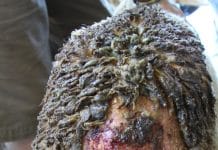Estimated reading time: 4 minutes
The difference between A1 and A2 milk is associated with a variation in the protein composition of cow’s milk. Both A1 and A2 variants are proteins in the casein group, which makes up around 80% of proteins. The two variants are almost identical, apart from one amino acid at position 67 of the polypeptide (amino acid chain) – A1 has histidine whereas A2 has proline.
Suksesvolle melkproduksie vanaf Vrystaatse weidings
The milk of modern dairy breeds differs in their composition of A1 and A2, with the highest frequency of the A1 variant observed in Holstein (0,31 to 0,66) and Ayrshire (0,43 to 0,72) breeds, and A2 in Guernsey (0,88 to 0,97) and Jersey (0,49 to 0,72) breeds. Being the most popular breed and providing the most milk, the Holstein introduces a comparatively high proportion of A1 milk into the South African market.
The effect of A1 milk
There are claims as to the negative effects of A1 milk, which are associated with the histidine at position 67 of the polypeptide. When A1 milk products are digested, the histidine cuts the polypeptide into a shorter peptide with seven amino acids called β-casomorphin-7 (BCM-7).
In the case of A2 milk the proline prevents a split at this site, thereby preventing the release of BCM-7. BCM-7 is associated with opioid and cyto-modulatory properties that, among others, could have inhibitory effects on the immune system. It has also been implied that A1 milk is not as easy to digest and absorb as A2 milk, and some have claimed that A1 or A2 milk may be associated with increased risk of developing type 1 diabetes, autism, schizophrenia and coronary heart disease.
Read more about anaplasmosis here.
Outcomes of research on BCMs
The following is a summary of research results:
- The presence of BCMs (e.g. BCM-7) or related peptides in unprocessed milk obtained from healthy cows has not been convincingly demonstrated. There is, however, evidence that proteases in fermented milk or cheese can potentially hydrolyse β-casein BCMs and further degrade these peptides to shorter-chain peptides. However, heat treatment during processing does not appear to affect the occurrence of BCMs in the final products.
- Although cow BCM-7 can act as an opioid receptor, it is not a potent receptor as BCMs in some other food products.
- Peptides with more than three amino acids normally do not penetrate the intestinal epithelium and therefore is unlikely to be transported to other organs.
- In concert, opioid peptides, including BCM-7, are highly sensitive to hydrolysis by peptidase, thereby strongly limiting or preventing their transfer intact across the intestinal mucosa and the blood-brain barrier.
- A link between casein-derived peptides and autism in patients with increased intestinal permeability has been suggested. However, recent data do not provide any support for such a relationship, which is in line with the argument of unlikely transfer of BCM-7 across the blood-brain barrier.
- It has been suggested that BCM-7 might be atherogenic through an oxidative action on LDL, but no studies confirmed this. Similarly, the possibility that BCM-7 could contribute to an increased risk of atherosclerosis and cardiovascular disease has been suggested, but the control of other contributing variables in the studies was poor.
- Some ecological studies have linked BCM-7 intake with insulin dependent diabetes mellitus. However, ecological studies have the shortcoming of being unable to establish a cause-effect relationship and they cannot adjust for possible confounding factors.
None of the outcomes of studies done could either show a likelihood of a relationship or establish a cause-effect relationship between the oral intake of BCM-7 or related peptides, and the aetiology and development of any of the suggested diseases.
The dairy industry’s position
Bearing in mind the aforementioned research evidence, the fact that milk presented to the consumer has mostly been processed in bulk from various sources, and that even dairy breeds with comparatively high frequencies of A1 do contain A2, the organised dairy industry cannot support any action to discredit A1 milk or promote A2 milk at the expense of A1 milk.
Milk production and equipment should make financial sense.
From the regulatory environment the position is supported by the Department of Agriculture, Land Reform and Rural Development with the following statement: “The department is aware that there are local producers/manufacturers/retailers who are considering indicating the presence of the A2 protein or the absence of the A2 protein (or both) in their milk/dairy products.
“However, in view of the current lack of South African based supporting scientific research around A2 type of beta-casein protein, the absence of a commercially available test and the legal status of the trademark, the use of the aforementioned claims on dairy products regulated under regulation R 1510 dated 22 November 2019 will not be allowed in terms of regulation 32(3)(a) and (5).” – Dr Heinz Meissner, research and development project manager, Milk SA, and Maretha Vermaak, dairy consumer education project, Milk SA
For enquiries, email Dr Heinz Meissner at heinz@milksa.co.za.







